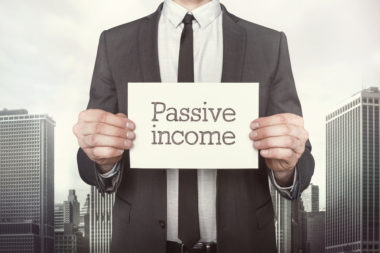When it comes to investing money, most people are looking for a combination of low risk and high return. In order to make the investment that is the best choice for you, it’s important to consider the risk versus the payoff, and to take into consideration your savings goals and long term plans. Depending on your situation, low-risk investments that gradually accumulate interest over time may be the best option.
Table of Contents
What Are Low-Risk Investments?
Historically speaking, the economy is prone to fluctuations over time, meaning that any investment comes with a potential risk. When it comes to investing, low-risk investments are attractive because they offer a relatively safe alternative for individuals looking to invest their money.
While low-risk investments are usually a safe bet, they aren’t risk-free. No-risk investments ensure that you never lose any of your principal balance. Most no-risk investments, however, don’t allow for gradual growth or enable you to keep up with inflation.
Low-risk investments are a good way to gradually accumulate interest without exposing your portfolio to the fluctuation and high volatility of riskier investments. While low-risk investments will only grow your money gradually and won’t provide significant returns, they can be a great option for risk-averse investors or those looking to spend their savings in the near future.
Types of Risk
When it comes to financial risk, there are a variety of different kinds of risks that may affect your investment. It’s important to consider the risks inherent in any investment to determine what works best for your situation.
- Market risk: The risk that investments can lose their value in the stock market. While investments tend to grow over time, they can be subject to short-term market fluctuations, and may be impacted by economic events like recessions and depressions.
- Tax risk: The risk that investments are subject to taxes, which may decrease your return on capital.
- Interest rate risk: The risk that changing interest rates will lower the value of an investment.
- Purchasing power risk: The risk that inflation will cause investments to have less purchasing power.
- Reinvestment risk: The risk that investments will be reinvested at a lower rate.
- Liquidity risk: The risk that investments may not be able to be quickly liquidated.
- Political risk: The risk that investments may lose value because of political activity, including war and trade disruptions.
- Legislative risk: The risk that investments will be negatively affected by new legislation.
Investments are usually subject to risk of some sort. Rather than try to avoid risk entirely, investors should consider certain risks depending on their particular situation, including their age, savings goals, and investment timetable.
Best Low-Risk Investments
While the best investment strategy depends on a variety of factors, there are plenty of low- and no-risk investment options to choose from.
Certificates of Deposit
Certificates of deposit, or CDs, are issued by banks and guarantee a fixed interest rate over a certain period of time. Certificates of deposit are generally low-risk, although investors may incur a penalty if they withdraw their money before the term of investment is up. Certificates of deposit can be a good strategy for allowing your savings to keep up with inflation without exposing them to the risk inherent in the stock market.
Savings Accounts
A savings account at a bank or credit union is a safe and easy way to store your money. Most savings accounts have a very modest interest rate, and allow individuals to access their savings at any time. Because the interest rates on most savings accounts are low, however, they may not be able to keep up with inflation.
Money Market Accounts
Money market accounts are another option offered by many banks. They typically have a slightly higher interest rate, allowing investors to keep up with the pace of inflation. Investors can usually withdraw their money when necessary, but may need to keep a minimum balance in the account. Like savings accounts and certificates of deposit, money market accounts are a low-risk investment that protects an individual’s savings while offering a modest interest rate.
Treasury Securities
Treasury securities are issued by the United States government, and may take the form of treasury bonds, bills, and notes. This type of investment often has a fixed term, ranging from one year or sooner, to up to thirty years. Investors risk losing money if they need to withdraw funds before their investment matures.
Corporate Bonds
Corporate bonds are issued by a variety of companies, and are another relatively low-risk investment strategy. Investors may experience some risk in the form of potential interest rate changes throughout the course of the investment. In addition, they run the risk that a company may default.
Annuities
Annuities are issued by insurance and investment companies, and guarantee investors a fixed income stream over a certain period of time. They can take the form of fixed annuities, which have a defined period in which payments are made, or variable annuities, in which monthly payments may fluctuate according to the market.
While annuities are generally low-risk, money invested in an annuity is subject to risk if the issuing company goes out of business, and investors may be subject to penalties if they withdraw funds early. Annuities are a good choice for those close to retirement age looking for a fixed income after they retire.
Stable Value Funds
Stable value funds are a feature of many 401(k) retirement plans. These funds are invested in a variety of short- and intermediate-term government and corporate bonds. Because these funds are insured against risk, they are a great option for those looking to preserve their principal, and are a good choice for investors nearing retirement age.
Image Source: https://depositphotos.com/





